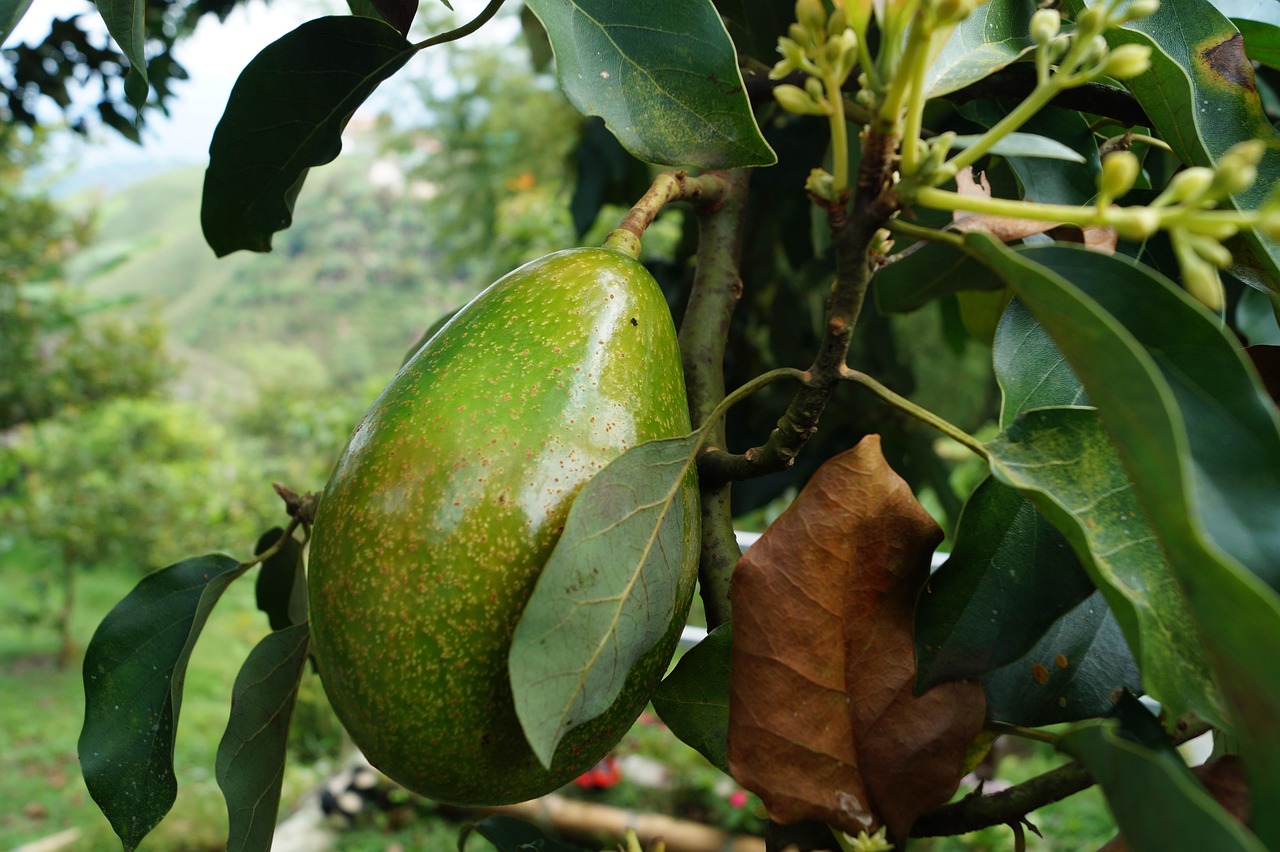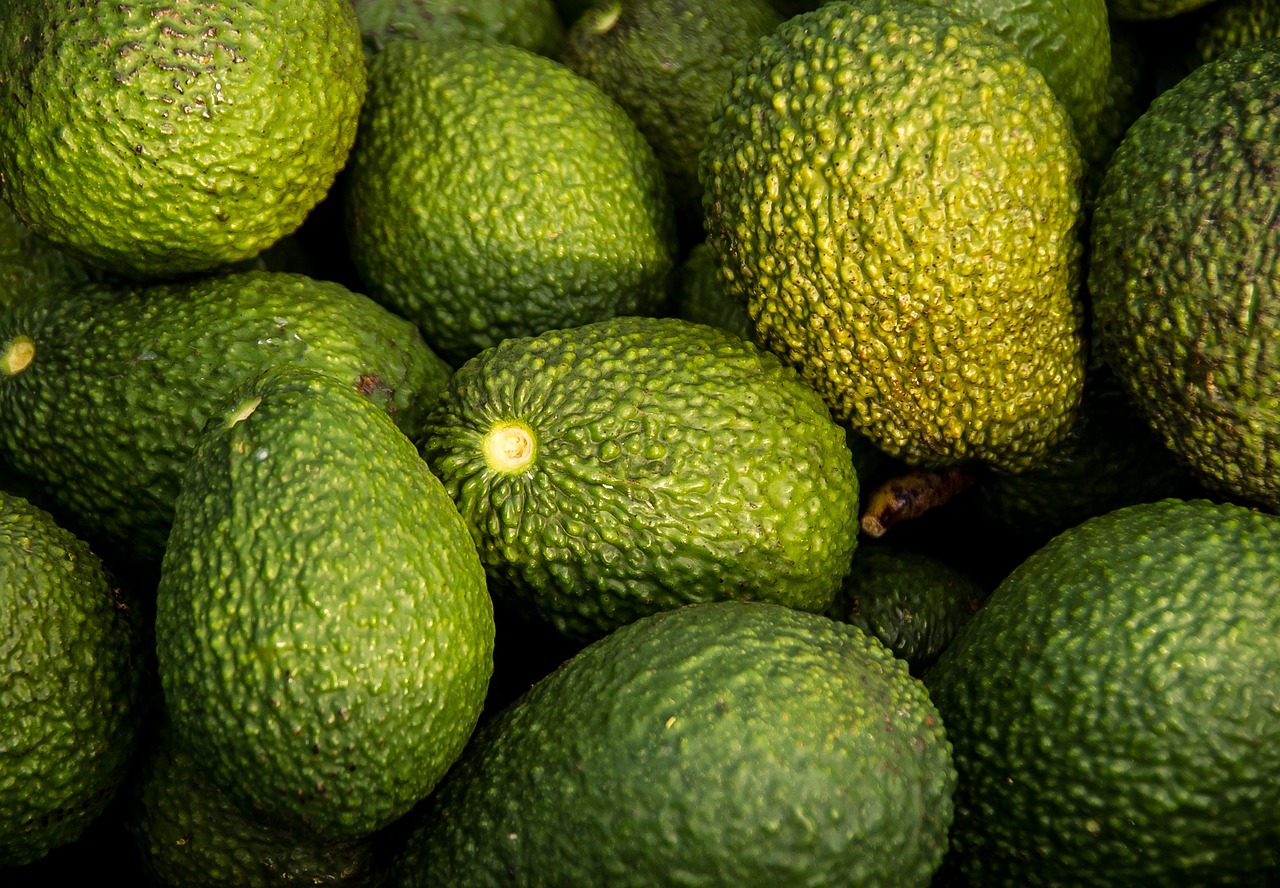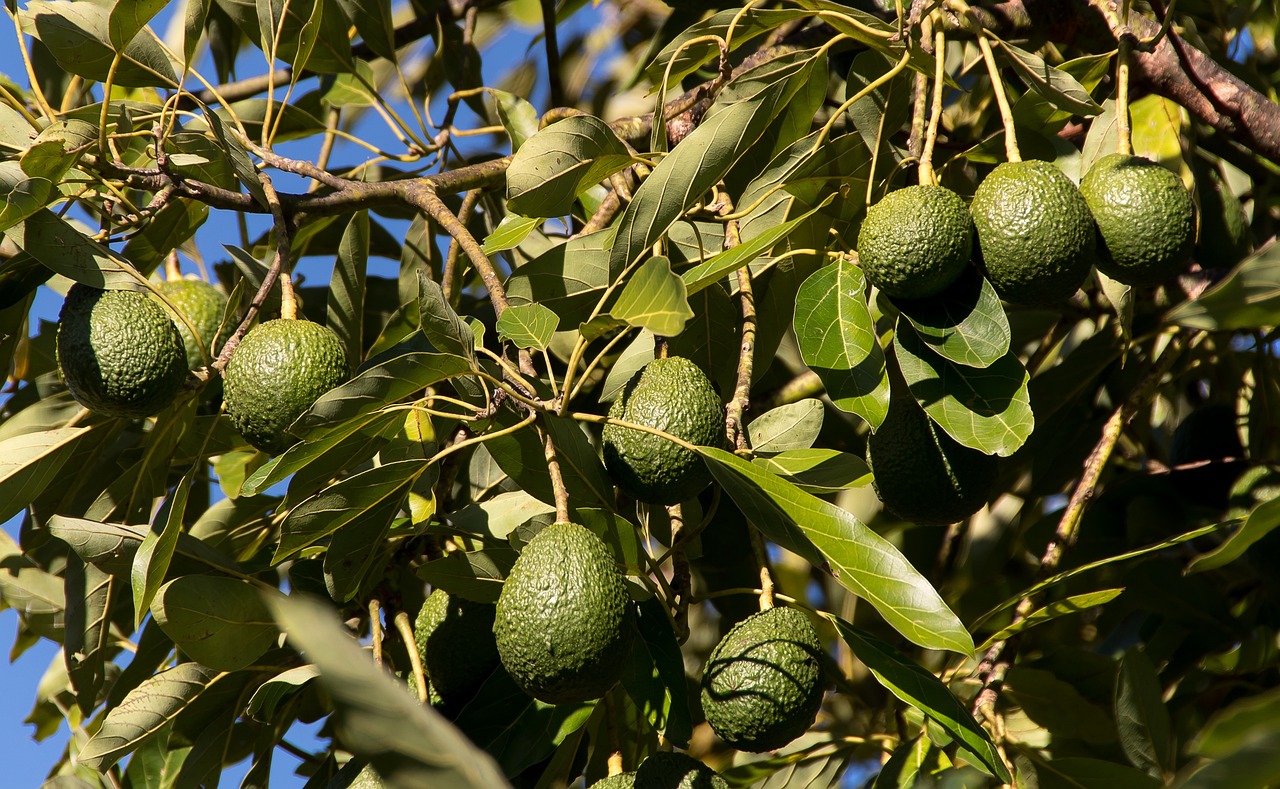The avocado tree grows at different rates depending on various factors such as climate, soil quality, and care. Typically, from seed to harvest, it takes between 3 to 4 years for an avocado tree to produce fruit, with growth rates varying significantly in the initial years.
Avocado trees (Persea americana) are renowned for their delicious fruit and health benefits. They are native to Central America and thrive in warm climates. The growth rate of an avocado tree is crucial for anyone interested in cultivating these trees, whether for personal use or commercial farming. Understanding the growth process helps in providing the right care and conditions for optimal fruit production.

Initially, avocado trees can be started from seeds or nursery grafted plants. While growing from seed can be a rewarding experience, it generally leads to a longer wait time for fruit compared to purchasing a grafted plant. Avocado trees can grow quite large, reaching heights of up to 80 feet under ideal conditions, but they are often pruned to maintain a manageable size for harvesting.
Factors Affecting Growth Rate
Several key factors influence the growth rate of avocado trees. These factors include:
- Climate: Avocado trees thrive in warm climates with temperatures ranging from 60°F to 85°F. They are sensitive to frost and extreme cold.
- Soil Quality: Well-draining soil rich in organic matter promotes healthy growth. Poor drainage can lead to root rot.
- Watering: Consistent watering is essential, especially during dry periods. However, over-watering can be detrimental.
- Sunlight: Avocado trees require full sun for optimal growth. A minimum of 6 hours of direct sunlight daily is recommended.
- Nutrients: Regular fertilization with a balanced fertilizer helps support healthy development and fruit production.
Growth Timeline
The growth timeline of an avocado tree from seed to harvest can be broken down into several stages:

| Stage | Time Frame | Description |
|---|---|---|
| Germination | 2-6 weeks | The seed sprouts roots and a stem, emerging as a small plant. |
| Seedling Stage | 6 months – 1 year | The young plant develops leaves and starts growing taller. |
| Young Tree | 1-3 years | The tree continues to grow and may start branching out. |
| Mature Tree | 3-4 years | The tree reaches maturity and begins producing fruit. |
During the germination stage, it is crucial to provide the seed with the right environment. This includes warmth, moisture, and light. Once the seed sprouts, it enters the seedling stage, where it requires regular watering and good light exposure. In the young tree stage, proper care is essential for promoting a robust structure that can eventually support fruit production.
The transition to a mature tree can vary significantly based on nurturing practices and environmental conditions. If cared for properly, an avocado tree can begin bearing fruit as early as three years after planting from a grafted nursery plant, whereas trees grown from seed may take longer to mature.
In addition to the environmental factors mentioned earlier, pests and diseases can also impact growth rates. Regular monitoring and maintaining good horticultural practices help mitigate these risks. Understanding these factors will ensure the avocado tree remains healthy and productive throughout its life cycle.

Planting an Avocado Tree
Planting an avocado tree correctly is vital for its growth and long-term health. The time of year and the location you choose can greatly affect how well the tree establishes itself. Typically, spring is the best season for planting avocado trees, as it allows them to take advantage of the warm weather.
Choosing the Right Location
When selecting a site for your avocado tree, consider the following factors:
- Sun Exposure: Avocado trees need full sunlight. Choose a location that receives at least 6 hours of direct sunlight each day.
- Soil Type: Well-draining soil is essential. Sandy loam or loamy soil is ideal for avocado trees.
- Protection from Wind: Young trees are vulnerable to strong winds. Planting near a windbreak can help protect them.
- Space: Ensure there is enough space for the tree to grow. A distance of at least 10 to 15 feet from other plants is recommended.
Preparing the Soil
Before planting, proper soil preparation is crucial. Here are some steps to take:
- Testing Soil: Conduct a soil test to determine pH and nutrient levels. Avocado trees prefer a pH of 6 to 6.5.
- Amending Soil: Based on soil test results, you may need to amend the soil with organic matter such as compost or aged manure.
- Tilling: Loosen the soil to a depth of at least 18 inches to encourage root growth.
- Drainage: If your soil retains water, consider creating raised beds or mounds to improve drainage.
Planting Process
The actual planting process involves several steps to ensure a successful start for your avocado tree:

- Selecting a Plant: Choose healthy plants from a reputable nursery. Grafted plants are preferable for quicker fruit production.
- Digging the Hole: Dig a hole that is twice as wide and just as deep as the root ball of your plant.
- Positioning the Tree: Place the tree in the center of the hole, ensuring that the top of the root ball is level with the soil surface.
- Backfilling: Fill in around the root ball with soil, gently packing it down to remove air pockets.
- Watering: Thoroughly water the newly planted tree to help settle the soil.
Caring for Your Avocado Tree
Once planted, ongoing care is essential for your avocado tree’s success. Here are key elements to focus on:
Watering
A young avocado tree requires consistent moisture, especially during dry spells. The following guidelines can help:
- Frequency: Water young trees once or twice a week, depending on rainfall and soil moisture.
- Deep Watering: Ensure water penetrates deeply to encourage root growth.
- Avoid Overwatering: Allow the top few inches of soil to dry out between waterings to prevent root rot.
Fertilization
A balanced fertilizer can promote healthy growth. Follow these tips for fertilizing your avocado tree:
- Timing: Fertilize in early spring and again in late summer.
- Nutrient Ratio: Use a fertilizer specifically formulated for fruit trees or one with an N-P-K ratio suitable for avocados.
- Avoid Over-fertilizing: Follow package instructions carefully to prevent damage to the tree.
Pest and Disease Management
Pests and diseases can hinder growth and fruit production. Regular monitoring is necessary. Common pests include:
- Aphids: Small insects that suck sap from leaves, causing distortion.
- Spider Mites: Tiny arachnids that thrive in dry conditions; they cause leaf discoloration.
- Citrus Leaf Miner: Larvae that create tunnels in leaves, reducing photosynthesis.
If you notice any signs of pests or disease, consider using organic pesticides or consulting with a local agricultural extension service for advice on treatment options.
Caring for an avocado tree requires dedication and knowledge. By providing the right conditions and ongoing maintenance, your tree will thrive and ultimately produce delicious fruit.
Harvesting Avocado Fruit
Harvesting avocados at the right time is crucial for the best flavor and quality of the fruit. Understanding the signs of ripeness and the proper methods for harvesting can make a significant difference in your avocado experience.
Signs of Ripeness
Avocados do not ripen on the tree but rather after they are harvested. However, there are several indicators that can help you determine when to pick your avocados:
- Color Change: Depending on the variety, the skin color of the avocado can change as it ripens. For example, Hass avocados turn from green to dark purple or black.
- Size: Mature avocados will generally have reached their expected size. However, size alone is not a definitive indicator of ripeness.
- Firmness: Gently squeeze the avocado. It should yield slightly to pressure if it is ripe.
- Stem Check: If the stem is still attached, you can gently pull it off. If it comes off easily and reveals green underneath, the avocado is likely ripe.
Harvesting Techniques
When it comes time to harvest, using proper techniques is important to avoid damaging the tree or the fruit. Here are steps to follow:
- Use Proper Tools: Use sharp pruning shears or scissors to cut the fruit from the tree. Avoid twisting or pulling the fruit as this can damage both the fruit and the tree.
- Harvesting Method: Cut the fruit with a short stem attached (about an inch long) to help prolong freshness and prevent bruising.
- Timing: Harvest in the morning when temperatures are cooler. This helps maintain fruit quality during handling.
- Avoid Overloading: If harvesting a large quantity, do it in stages rather than overloading your hands or baskets, which can lead to bruising.
Post-Harvest Handling
Properly handling avocados after harvest is essential for maintaining their quality. Here are some post-harvest tips:
- Curing: Allow harvested avocados to cure in a cool, dry place for a few days. This process can enhance flavor and texture.
- Storage: Store unripe avocados at room temperature. Once they ripen, they can be placed in the refrigerator to slow down further ripening.
- Avoiding Bruises: Handle avocados with care to prevent bruising, which can affect taste and appearance.
Varieties of Avocado Trees
Understanding the different varieties of avocado trees can enhance your growing experience. Each variety has unique characteristics, growth rates, and harvesting times. Here are a few popular types:
| Variety | Description | Harvest Season |
|---|---|---|
| Hass | The most popular avocado variety with dark purple skin when ripe; creamy texture and rich flavor. | Late winter to early spring |
| Fuerte | A hybrid variety with smooth green skin; creamy texture and milder taste. | Winter to early spring |
| Bacon | A cold-hardy variety with smooth green skin; mild flavor and oval shape. | Late winter to early spring |
| Puebla | A larger avocado with a coarse texture; rich flavor and suitable for colder climates. | Fall to winter |
Choosing the right variety based on your climate and preferences will impact your growing success and fruit quality. Some varieties may be better suited for specific regions while offering varying growth rates and harvest times.
Cultivating Avocado Trees in Different Climates
The climate where you plant your avocado tree can significantly influence its growth rate and overall health. Here are considerations for various climates:
Tropical Climates
Tropical regions provide ideal conditions for avocado trees, allowing them to grow rapidly and produce fruit sooner. Key points for growing in tropical areas include:
- Consistent Moisture: Ensure adequate watering during dry spells, as tropical climates may have fluctuating rainfall.
- Pest Management: Regularly check for pests, as tropical climates may have higher pest populations.
Temperate Climates
Avocado trees can still thrive in temperate regions, although they may require some additional care:
- Frost Protection: Implement frost protection measures such as planting near walls or using frost blankets during cold snaps.
- Diverse Varieties: Choose cold-hardy varieties that can withstand lower temperatures.
Cultivating avocado trees requires understanding their specific needs based on environmental conditions. By adapting care practices to suit your locality, you can promote healthy growth and successful fruit production.
Common Challenges in Growing Avocado Trees
While growing avocado trees can be a rewarding endeavor, there are several challenges that gardeners may face. Understanding these challenges can help prepare you for successful cultivation.
Environmental Stress
Avocado trees are sensitive to their environment. Here are some common environmental stresses:
- Temperature Extremes: Both high heat and frost can damage avocado trees. Young trees are particularly vulnerable. It is crucial to monitor temperatures and provide protection during extreme weather.
- Water Stress: Insufficient or excessive water can lead to stress. Signs of water stress include wilting leaves and poor fruit development. Regularly check soil moisture levels.
Pest Infestations
Pests can impact the health and productivity of your avocado trees. In addition to those previously mentioned, consider the following:
- Avocado Lace Bug: This pest feeds on young leaves, causing stippling and leaf drop.
- Root Weevil: Larvae feed on roots, weakening the tree and affecting growth.
Implementing an integrated pest management (IPM) approach can help control infestations effectively.
Disease Management
Diseases can also pose significant risks to avocado trees. Some notable diseases include:
- Root Rot: Caused by overwatering or poorly drained soil, this fungal disease can quickly kill the tree.
- Anthracnose: A fungal disease that affects fruit and foliage, leading to dark spots and premature fruit drop.
Regular inspections and maintaining good horticultural practices can greatly reduce the risk of diseases.
Pruning and Training Avocado Trees
Proper pruning is essential for maintaining the health and shape of avocado trees. Here are some key points about pruning:
- Timing: The best time to prune is during the late winter or early spring before new growth starts.
- Technique: Remove dead or damaged branches first. Then, thin out crowded areas to allow more sunlight and air circulation.
- Training: Young trees can be trained to grow in a specific shape, which can enhance fruit production and make harvesting easier.
Final Thoughts
The journey from seed to harvest for avocado trees is a fascinating process that requires attention and care at every stage. Understanding the growth rate, environmental needs, pest management, and proper harvesting techniques will help you cultivate thriving avocado trees.
Through consistent monitoring and appropriate care, you can overcome challenges such as pests and diseases while optimizing growth conditions. Whether you choose to grow from seed or start with a grafted tree, patience and dedication are keys to success. With the right knowledge and practices, you can enjoy the rewards of your efforts in the form of delicious, home-grown avocados.
Your commitment to nurturing these trees will not only yield fruit but also provide a beautiful addition to your garden or landscape. Embrace the process, learn from experience, and savor the satisfaction of growing your own avocados from seed to harvest.
